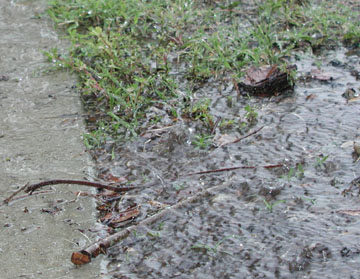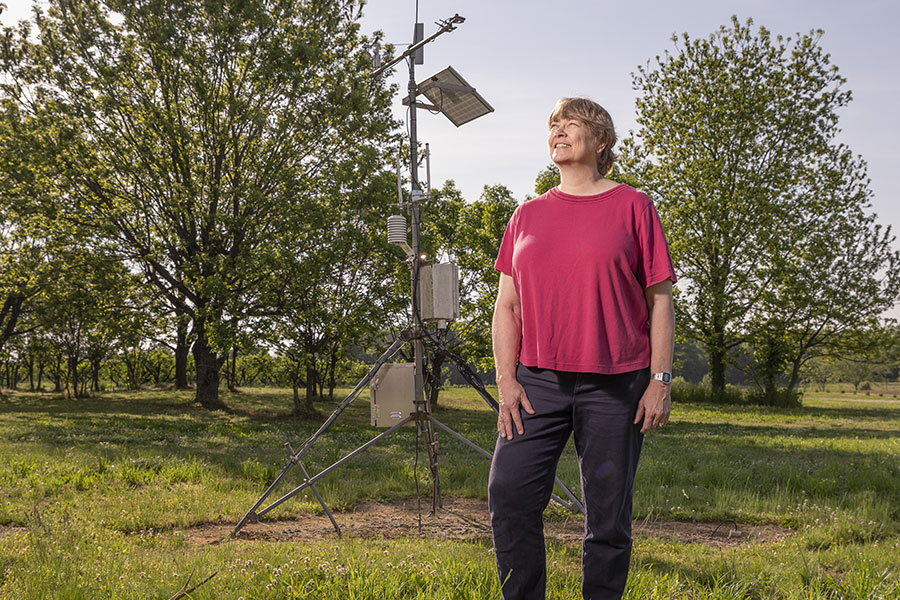Georgia ended 2009 on a cold, rainy note, setting several records for December across the state, including some annual records. Strong fronts brought severe weather, too.
Rainfall was well above normal, according to radar estimates. Many areas south of the fall line from Columbus to Augusta and in the northeast mountains received more than 10 inches of rain.
The highest monthly total from National Weather Service reporting stations was 13.62 inches in Columbus (9.22 inches above normal). The lowest was in Brunswick at 4.02 inches (1.19 inches above normal). Atlanta received 9.10 inches (5.28 inches above normal), Macon 8.98 inches (5.05 inches above normal), Athens 8.87 inches (5.16 inches above normal), Augusta 8.97 inches (5.83 inches above normal), Savannah 10.71 inches (7.90 inches above normal), Valdosta 7.45 inches (3.79 inches above normal) and Alma 7.51 inches (3.84 inches above normal).
The highest monthly totals from Community Collaborative Rain, Hail and Snow Network stations were 16.27 inches in Clay County in southwest Georgia and 13.06 inches in Rabun County in far northeast Georgia.
The Georgia Automated Environmental Monitoring system reported 11.79 inches at Tiger in Rabun County, 13.85 inches at Plains in Sumter County and 16.72 inches in Georgetown in Quitman County for the month.
Daily record maximum rainfalls occurred Dec. 2 across many areas with the passage of a Gulf of Mexico low. The highest daily record of 3.63 inches was set at Columbus. Record daily rainfalls were also measured at several locations Dec. 13, 14 and 18 in areas associated with warm fronts ahead of lows from the gulf.
Augusta, Columbus and Savannah all broke their all-time December precipitation records. Augusta’s Bush Field airport recorded 8.97 inches, beating 8.65 inches set in 1981. Columbus recorded 13.62 inches, beating 9.39 inches set in 1953. Savannah recorded 10.71 inches, beating 9.44 inches set in 2007. In addition, Macon reported its third wettest December ever, falling just short of 10.39 inches set in 1972.
Several stations in Georgia set annual rainfall records in 2009, including Columbus with a preliminary annual total of 80.23 inches, washing away the old record of 73.22 inches set in 1964. A final annual report will be issued later this month.
Temperatures were cooler than normal, with the exception of coastal cities. No temperature records were set. The monthly average temperature in Atlanta was 42.3 degrees F (3.1 degrees below normal), in Athens 42 degrees (2.8 degrees below normal), in Columbus 46.1 degrees (3 degrees below normal), in Macon 45.9 degrees (1.9 degrees below normal), in Savannah 52 degrees (.6 degree above normal), in Brunswick 54.4 degrees (.2 degree above normal), in Alma 51.3 degrees (2.3 degrees below normal), in Valdosta 51.4 degrees (average) and in Augusta 45.6 degrees (1.3 degrees below normal).
Georgians experienced four days of severe weather in December. Four weak tornadoes occurred Dec. 2 in central and southeast Georgia, including one that injured two people in a mobile home in Pierce County. Several other structures were damaged in the storms.
Strong winds were reported Dec. 8, causing scattered damage to trees and power lines. Another tornado was reported Dec. 9 in Wayne County, damaging a mobile home and slightly injuring the resident. Strong winds and some funnel clouds were also reported Dec. 14.
Rivers were reported to have minor to moderate flooding on several dates. The moderate flooding was mainly confined to the larger rivers below the fall line.
The wet month caused problems for farmers trying to harvest hay and other crops. Up to 71 percent of the soils were considered to have surplus moisture. Wheat planting was down by up to 30 percent in some areas due to the inability of farmers to run equipment in the waterlogged fields. Some areas still had up to 25 percent of their cotton to harvest.
Though we are only half way through the month, it already looks like January could set some weather records, too.





